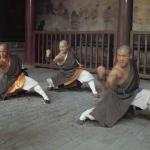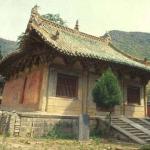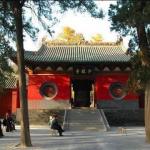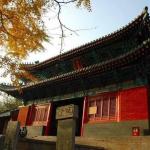Shaolin Temple
The Shaolin Monastery or Shaolin Temple, is a Chan Buddhist temple at Song Shan in Henan Province of what is now the People’s Republic of China. The monastery was built by the Emperor Hsiao-Wen in AD 477, and the first abbot of Shaolin was Batuo, (also, Fotuo or Bhadra (the Chinese transposition of Buddha), an Indian dhyana master who came to China in AD 464 to spread Buddhist teachings. Long famous for its association with Chinese martial arts and particularly with Shaolin Kung Fu, it is the Mahayana Buddhist monastery perhaps best known to the Western world. Shaolin Temple has a reputation for its Zen Buddhism and Shaolin Kungfu, which is the main attraction of the scenery spot. Shaolin Temple was built for Indian monk Patuo in 495, or 19 of the Yaihe year in the Northern Wei Dynasty by Xiaowen Emperor. Shaolin Temple Permanent Residence Compound starts from the gate, having seven courtyards for worshipping Buddha, sitting in meditation, chanting scriptures, reception, collecting books and undertaking religious ceremonies as well as for residence of abbotting monks and deacons and process of routine affairs. The Permanent Residence Compound is 160 meters wide and 360 meters long, with a land area of 57,600 square meters. Shaolin Temple was built against the hills. In the period of its great prosperity, seven buildings lined the central line of the temple, but in the war among warlords in the period of Kuomingtang, some main buildings were burnt by Shisanyou, including the Hall of Heavenly King, the Abbot’s room and the Hall for preaching the Buddhist doctrines and the Bell Tower and many precious Buddhist sutras pugilism charts were destroyed as well. In the late 20th century, Shaolin Temple was rebuilt to the old system. The stone tablets in Shaolin Temple are also well known, which are mainly in the Ciyun Hall, or the Tablet Passage. About 120 pieces of handwriting works are stored here, dating from the Northern Qi Dynasty. Many famous masters, such as Caijing, Mipei, Zhao Meng Fu and Dong Qichang, ever left their handwriting here. Tower Forest is where the monks were buried. The one in Shaolin Temple is the biggest in China, 232 all together. It is of great value in the study of Buddhism scriptures, buildings and Zen Buddhism Besides, some other famous places include the Buddhist Convent, built in memory of Damo Buddhist meditating facing the wall; Damo Cave and the Sweet Dew Tower, where Batuo ,the founder for the Shaolin Temple, translated the sutras. The temple has been destroyed and rebuilt numerous times, most recently in 1928 when the monastery was set fire to. The fire raged for several weeks and destroyed most of the buildings and manuscripts stored within. The temple was rebuilt only to be plundered in 1966 during the Red Guard’s rampage focusing on religious materials and artifacts. * * * * *
 ThingsAsian
ThingsAsian




















